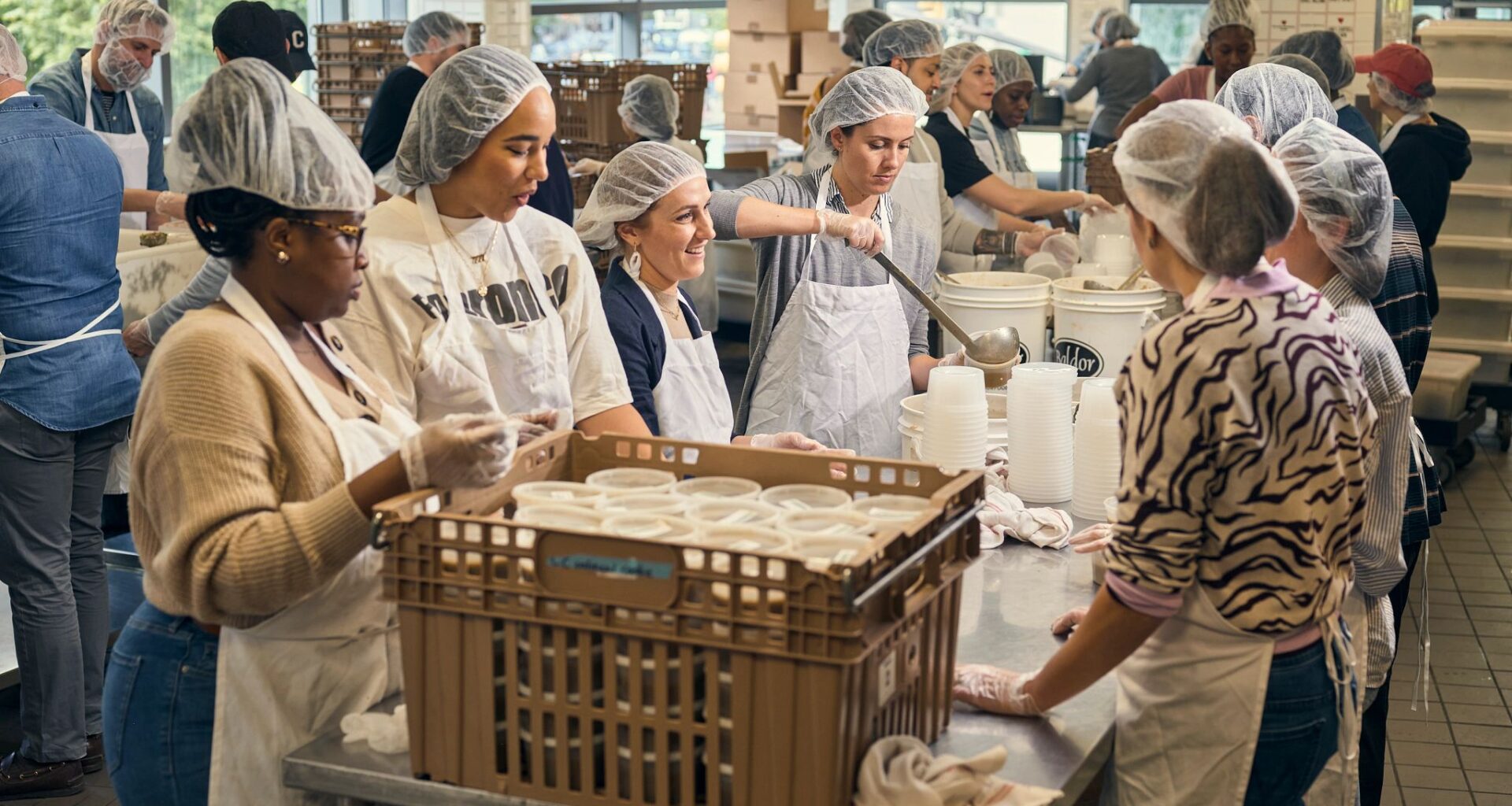“Stock your pantry with protein staples ahead of time to reduce stress around preparing balanced meals, or purchase larger amounts of proteins — fish, chicken, lean beef — and freeze them for later use,” suggests Lisa Zullig, registered dietitian nutritionist and director of nutrition services at GLWD. “Having these on hand can save money and time, and ensure that you always have sources of protein to prepare or add to meals.”
Fill a 64-ounce pitcher with water at the start of each day.
Use it to refill your loved one’s water glass throughout the day. At the end of the day, an empty pitcher is an easy way to know they’ve gotten the minimum recommended amount of water. Why does that matter? “Adequate hydration is essential for supporting bodily functions, especially as we age or manage chronic conditions,” says Cristina Spano, a registered dietitian nutritionist at GLWD.
Taking in the recommended amount isn’t always easy for older adults, who are more vulnerable to dehydration; that’s especially true for those living with a chronic condition. Two ways to help make sure your loved drinks up: Add slices of citrus fruits, berries, cucumber or fresh herbs to that pitcher of water, or try flavored sparkling water, suggests Spano. And try to include foods with a high water content — like watermelon, cucumber, celery, tomatoes, oranges and pineapple — to the meal plan to help boost overall fluid intake.
Keep it simple.
Preparing nutritious meals doesn’t have to be complicated. Plenty of good-for-you foods are like chameleons, changing depending on their setting and surroundings. Take, for example, rice, a versatile and key staple of many cuisines.
“With some simple additions, it can contribute to your overall fiber and protein intake,” says Sabrina Krebs, a registered dietitian nutritionist at GLWD. “To boost the fiber, consider mixing white rice with whole grains like brown rice, wild rice or quinoa. To add protein, try cooking rice with peas, lentils, red beans or other legumes. Additionally, instead of cooking rice with water, try making it with bone broth for added protein, like collagen, and flavor.”
Make meals a time to connect.
Research shows that sitting down to a meal with family or friends — a key component of the Mediterranean diet, arguably the healthiest eating plan in the world — can be just as nourishing as the food itself. According to the 2025 World Happiness Report, sharing a meal ranks among the strongest predictors of well-being. A study published in 2024 in Frontiers in Public Health found that meal sharing may help improve mental health by reducing feelings of loneliness, sadness and emotional distress. Other research shows it stimulates the brain’s endorphin system — the same pathways closely linked to oxytocin and dopamine, the brain’s feel-good chemicals. So set another place at the table, and enjoy!

